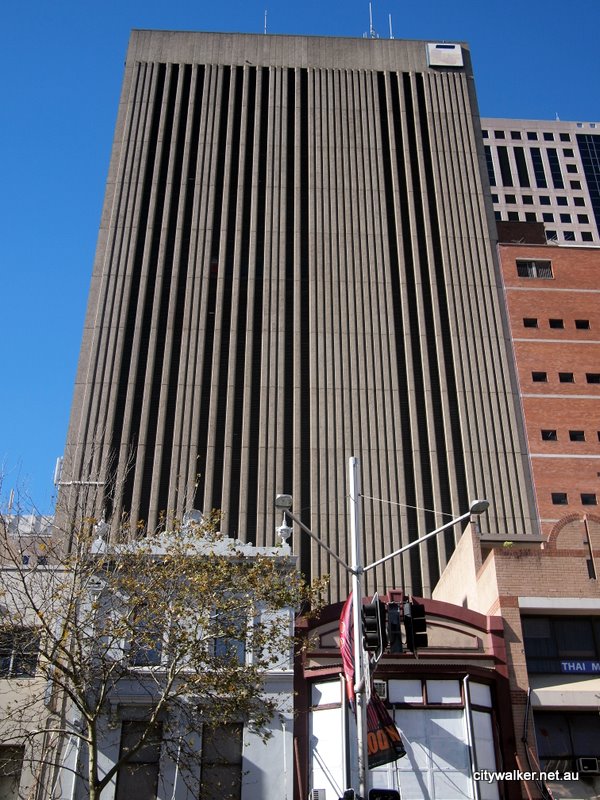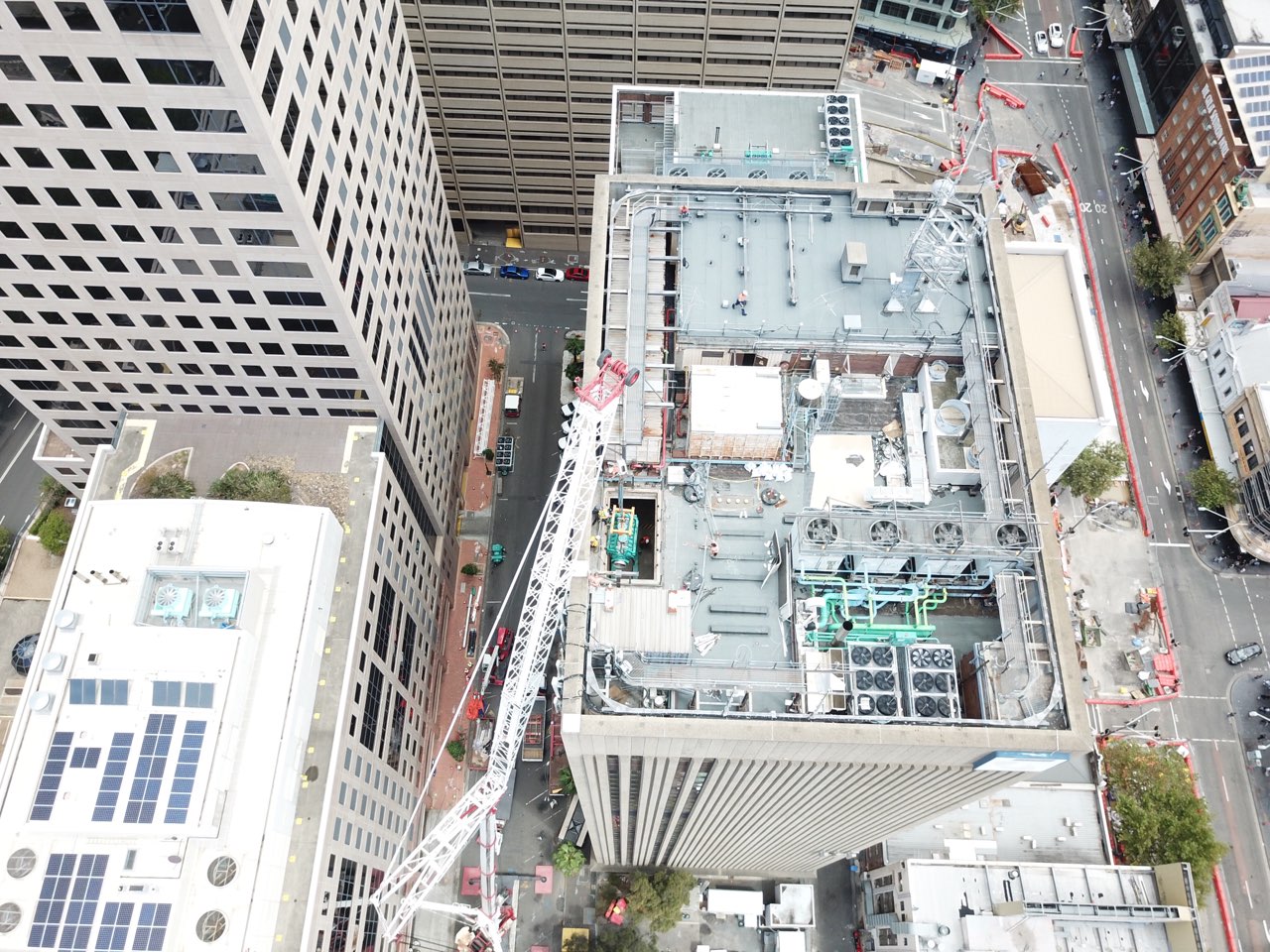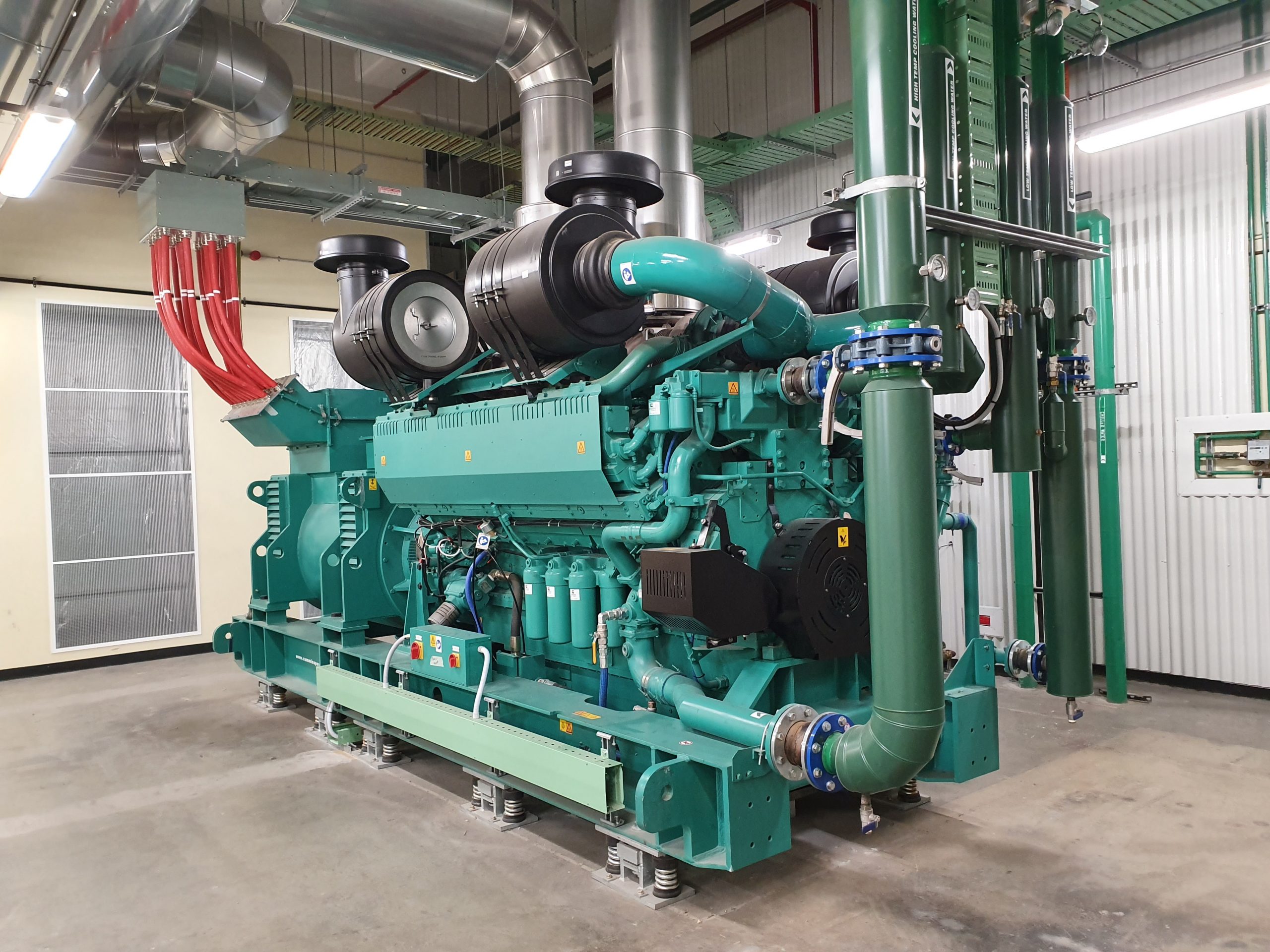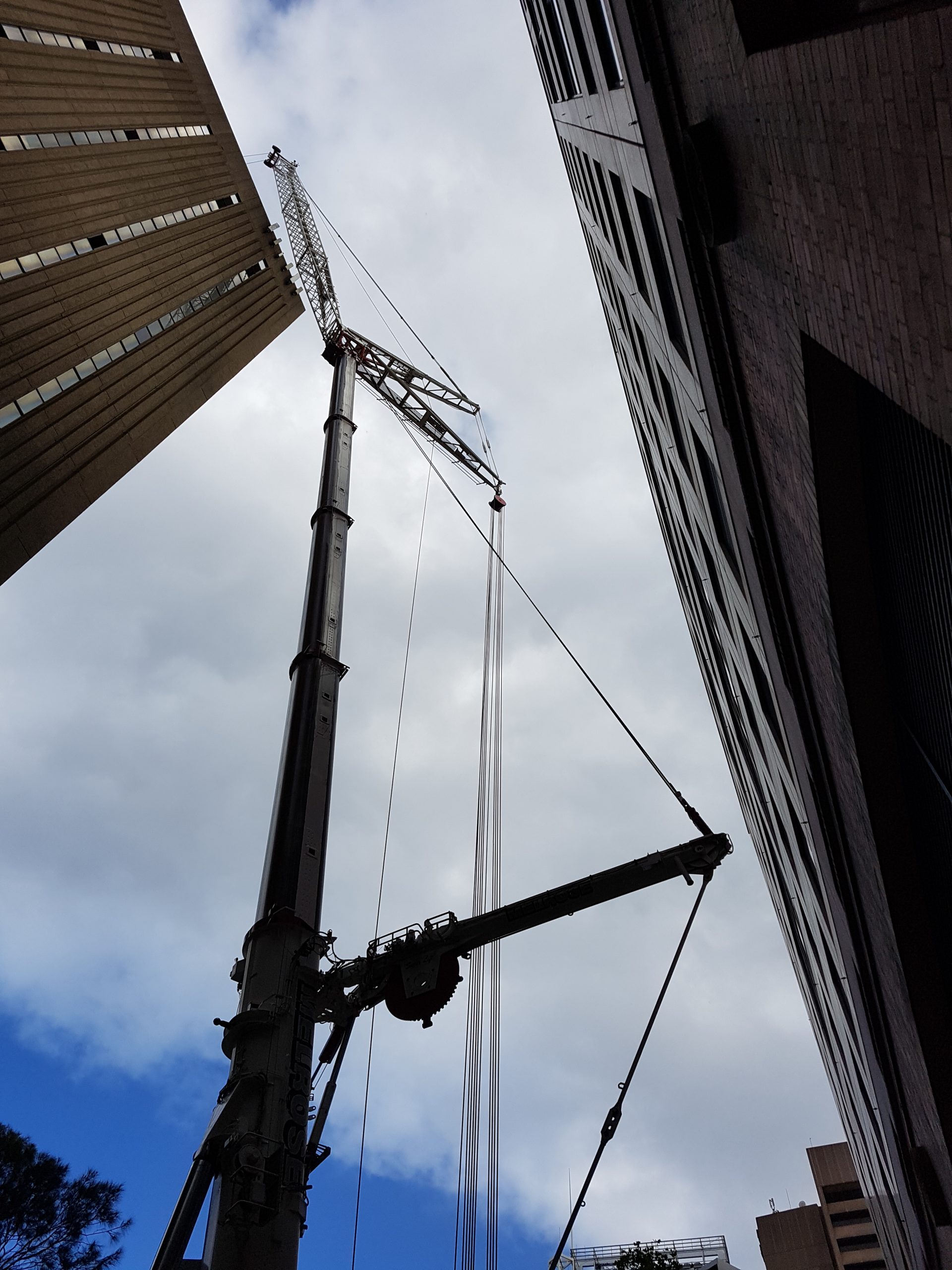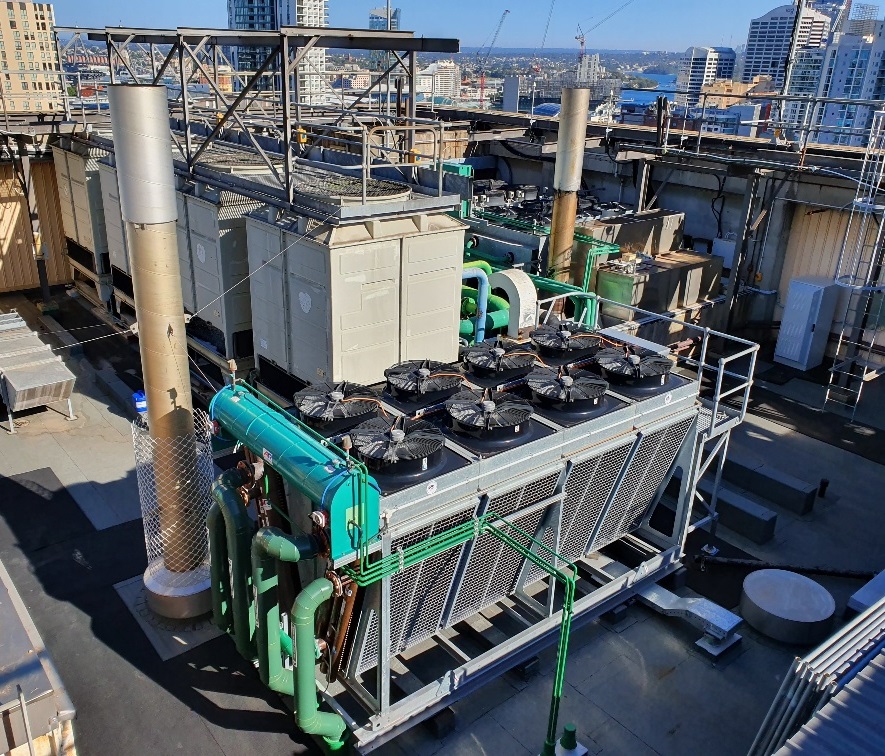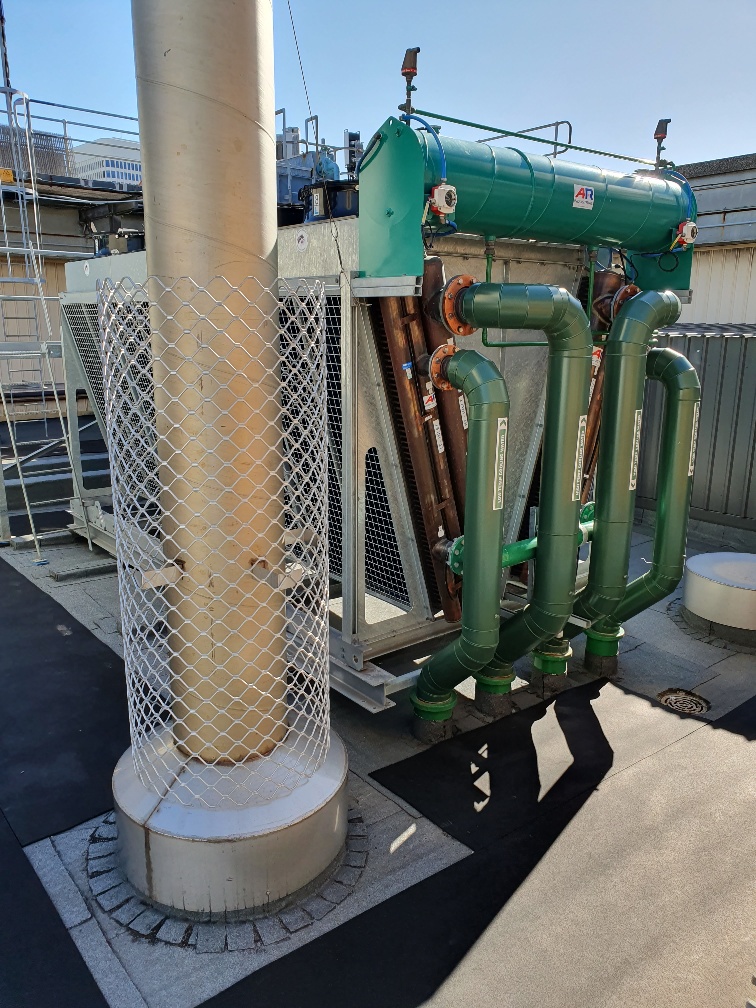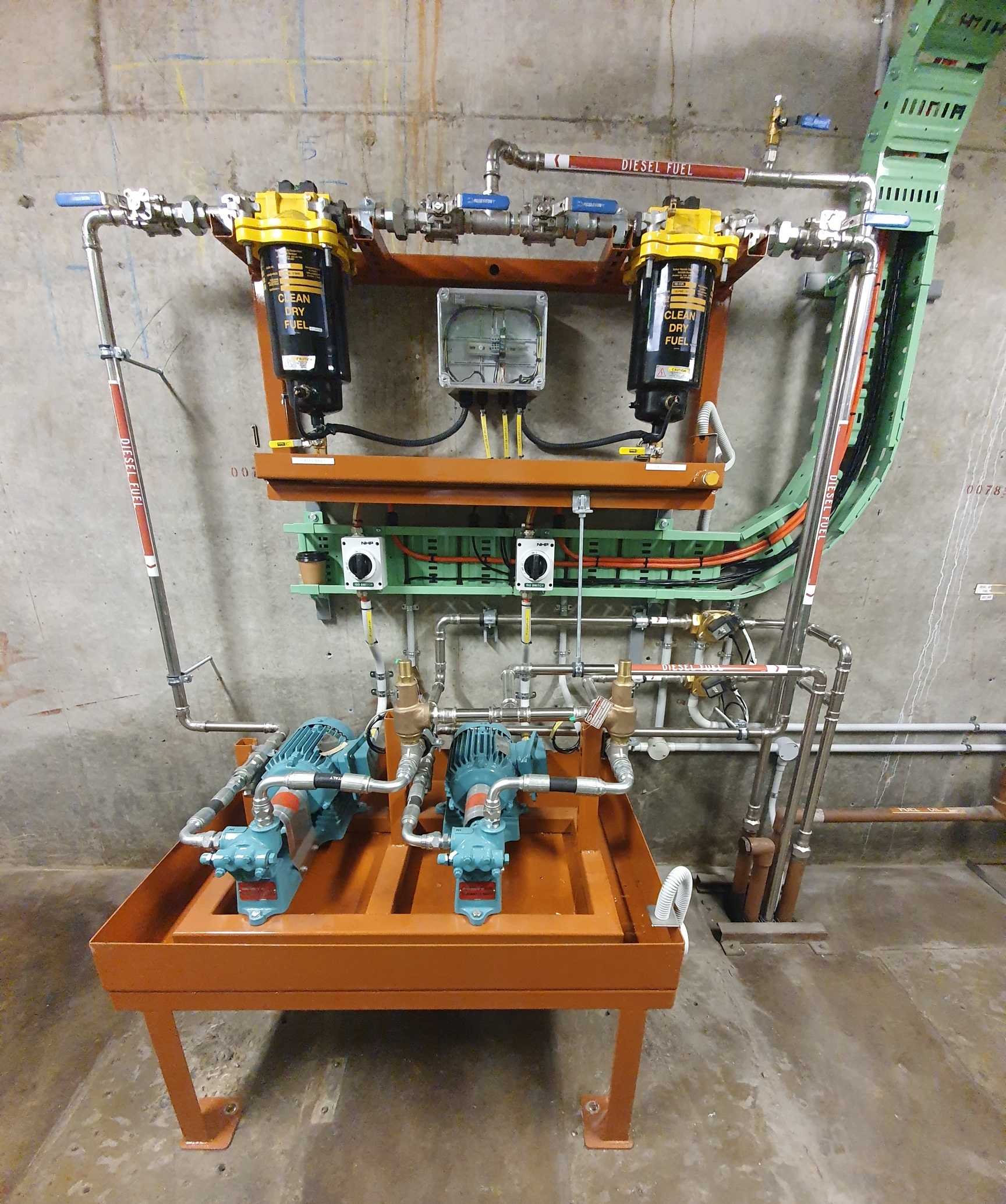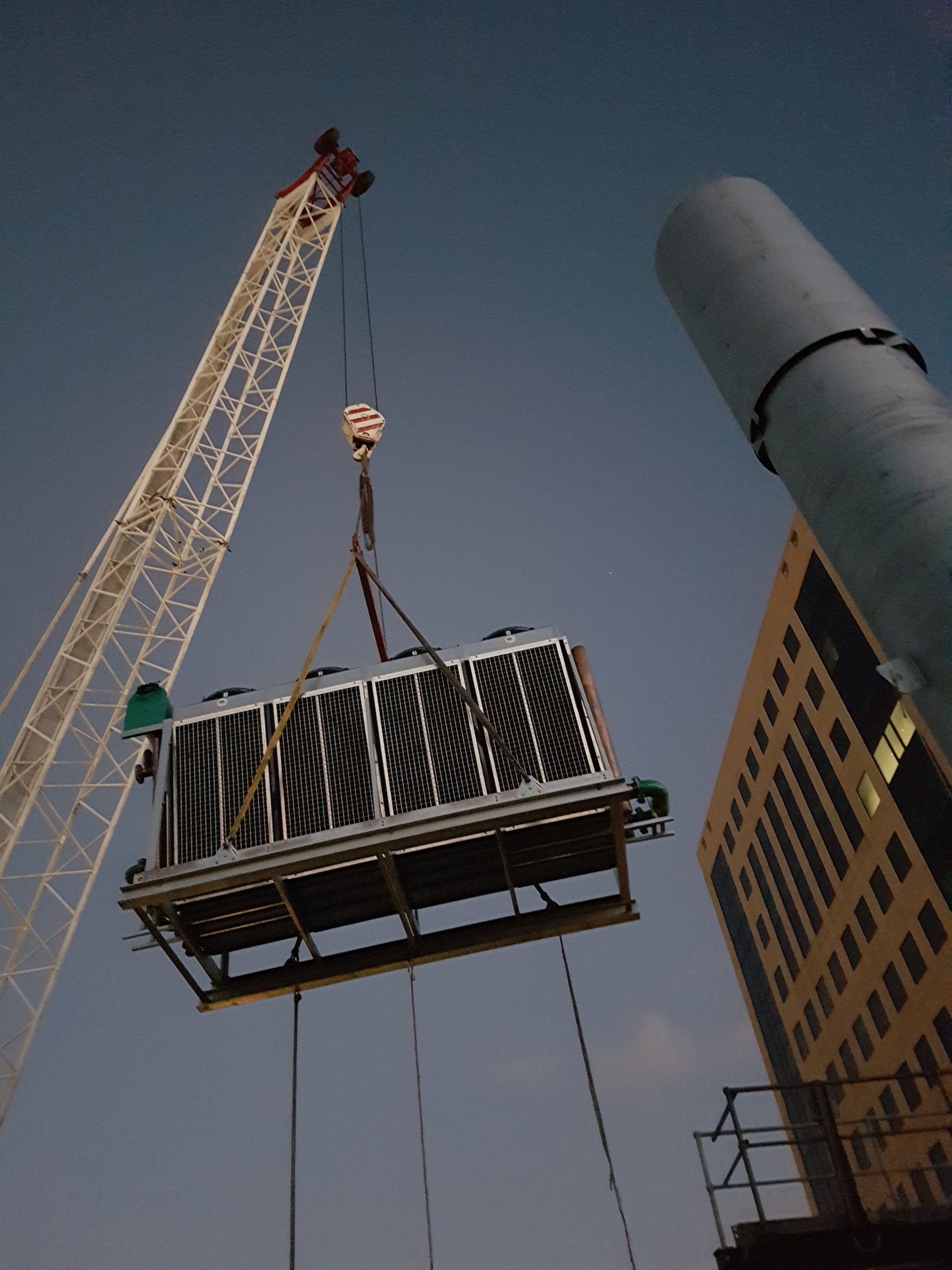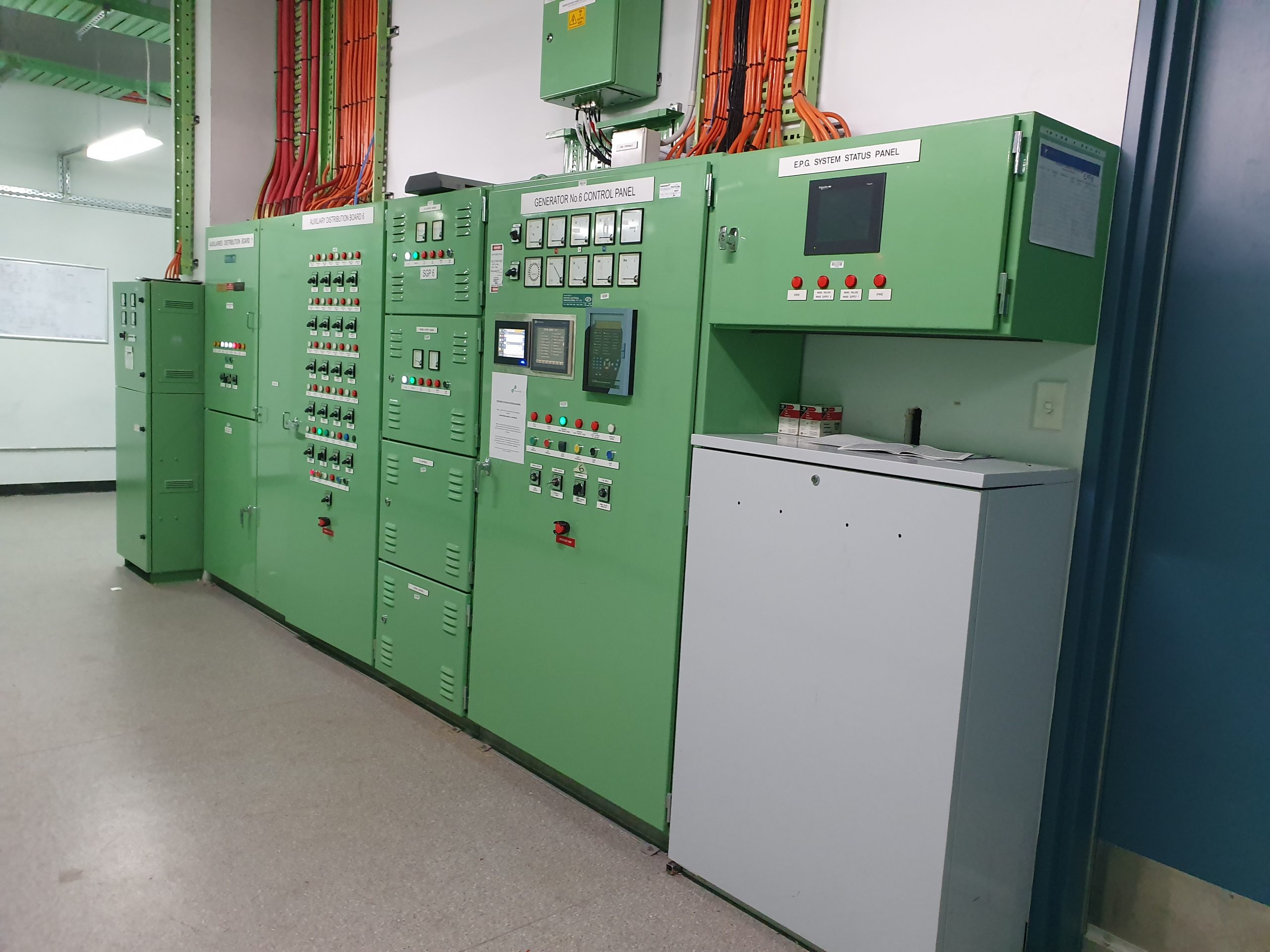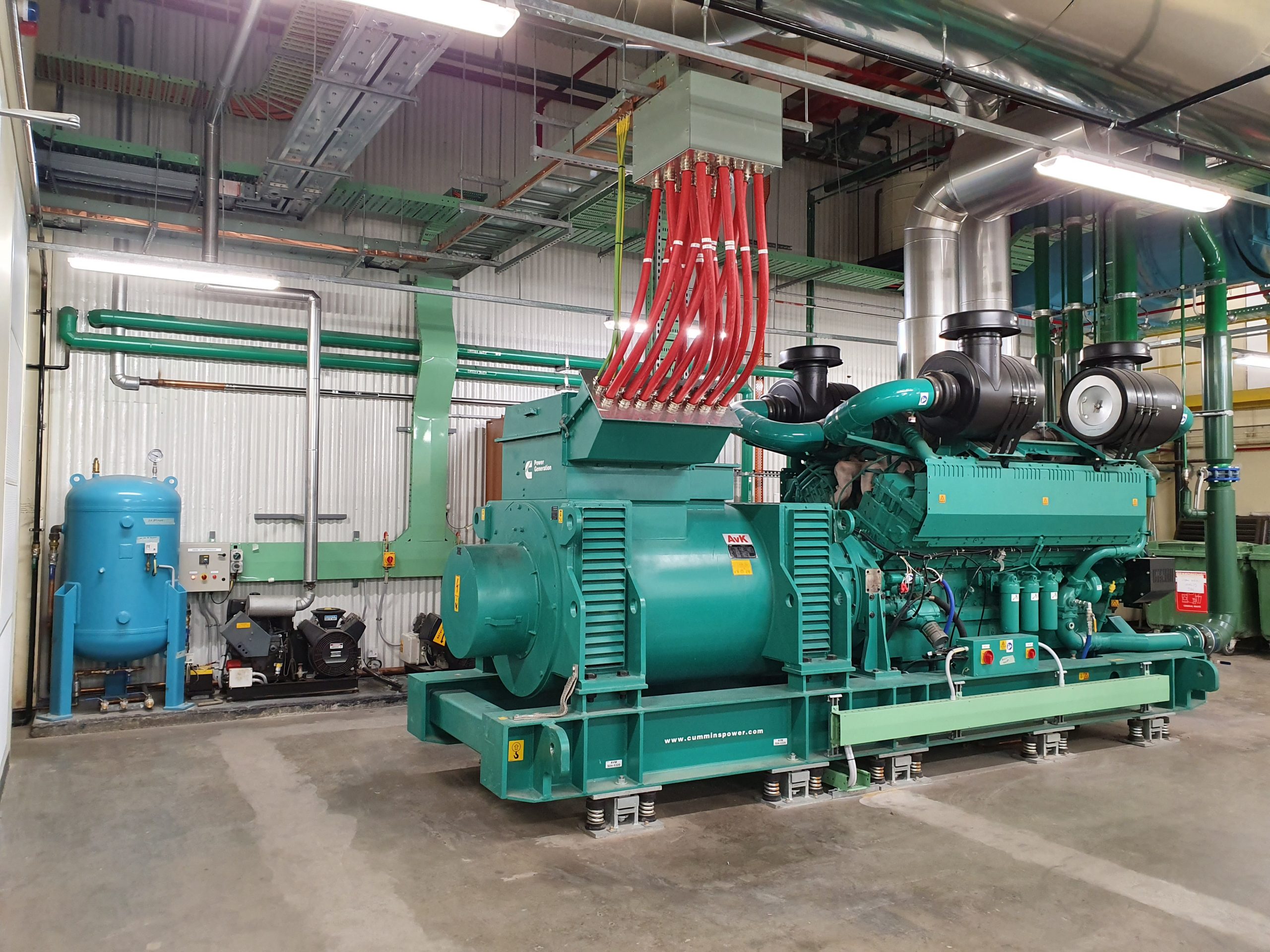Haymarket Exchange – Standby Generator Upgrade
This project was a major 3000kVA stand by Generator Upgrade for Telstra at one of their major Sydney CBD sites in preparation for new the 5G roll out. The works involved demolition and removal of three existing generators, associated electrical systems (busways, control panels, switchboards) along with cooling, fuel, ventilation systems and involved some design challenges, least of all being the minor technical issue that the new generator didn’t fit through the existing roof opening, but that’s what made the project different and interesting.
The first stage of the project involved the major demolition and disconnection works in readiness for the a one off crane lift. To reduce crane costs and time, most of the demolition works were completed prior to the lift. Where possible materials were cut down and placed in scrap metal bins or palletised and taken down in the goods lift. Large bulky items such as the generators, air receivers, the old towers and walkways on the roof were stripped down, palletised and lifted off with the crane.
A key environmental aspect of this project is that 95% of the old plant and materials where re-cycled, even the old fluorescent light tubes. The works included, the drain down of the generators and day tanks of all fluids, as well as the on-site cleaning of the day tanks before they could be removed and scrapped, all to comply with EPA Guidelines.
In all we recycled 16 off 2m3 scrap metal bins, 22 flat bed hi-ab trucks, 2 semi-trailers (for generators) as well as disposing of 20 battery’s, 500 litres of contaminated fuel and 830 litres of oil. We were also able to re-model one of the old cooling tower support frames to become the service platform for the new air cooled radiator.
The crane lift involved council permits and traffic management plans to allow Parker Street to be closed off for the set up of a 400 tonne mobile crane with a 37 m luffing jib and a mega wing. This was an impressive piece of equipment once set up. The NSW Government’s light rail project blocking off the north end of the street the week of the lift meant we only had one way in and out for access of all our trucks and plant.
As the generator would not fit in the existing roof opening a franna crane was also on site to unload and support the set while Cummins technicians separated the engine, alternator and frame in the street for lifting. The franna was also used to unload large plant such as the radiator in adjacent Barlow Street and then walk the radiator down Parker Street to the crane.
The actual lift was a major co-ordination effort with synchronising of flat bed trucks to remove the old equipment and then progressively load the new gear. To optimise crane time when the last major equipment was removed from the plantroom the generator frame was lifted and positioned under to roof opening in the plantroom and placed on rollers. The engine was then lifted into position and whilst this was being fitted by Cummins the crane continued to lift to and from the roof area. With the engine in position the alternator was then lowered and aligned with the engine and supported by the crane whilst connection was carried out.
With the generator and components loaded work could then begin on the installation of the new services and construction of the new internal walls and structures. While the new muffler and flue sections where installed Cummins continued with site assembly of the generator sub section, filters, vent pipes and wiring connections. Once complete the generator was then skated into position to allow power and pipe connections.
With the generator in position works could also then begin of construction of the plantroom walls and intake plenum. As there is provision within the “future” works for a third generator we constructed the new internal walls with a large section that can be easily demolished and replaced should the future generator be installed. The new roof intake plenum is also designed to provide for the future set should it be installed.
The new generator fitout included full stand-alone electrical, controls, fuel, cooling and ventilation systems. A new Auxiliary Switchboard was installed, plus new SPG 4 Control s, Battery Chargers, a Fuel Control Panel and a 4000 amp busway connection to the existing generator panel.
Load bank testing of the new generator posed major logistical challenges with the engine being located on Level 13 and the load banks at street level. In collaboration with electrical consultants we developed a testing plan where we could utilise existing (stand-by) electrical risers which allowed us to test the whole new electrical system from the generators to the main electrical boards located in the main switchroom on level 1.
In addition to final commissioning and testing of our new generator, synchronised running and black start testing with the existing site generator was also conducted to complete our installation works.
This has been somewhat an interesting project with the works being stopped many times for long periods as a result of Telstra Embrago’s associated with the 2019 drought and bush fires.
We were extremely happy with the finished product and, more so comments made with respect to the quality and professionalism of our works. This was a real team effort led well by our Project team.

